
Contact us
Our team would love to hear from you.

Businesses strive to ensure their applications are responsive, stable, scalable, resource-efficient, and consistent, with low latency and fast load times. These attributes are vital for a company’s success, as their absence can result in significant losses.
Statistics show that for every second of load time—between zero and five seconds—website conversion rates decrease by 4.42%.
Additionally, according to Uptime Institute’s 2022 outage analysis report, more than 60% of digital failures result in losses of at least $100,000.
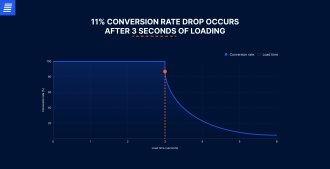

Source: businesswire.com
So, how do we ensure an application is fast, dependable, scalable, consistent, and functions correctly? One way to achieve this is through performance testing. In this article, we provide a guide to performance testing, featuring a real example from the EffectiveSoft practice. We review performance testing types, important metrics, and the tools used in the testing process.
Performance testing is the process of assessing the efficiency of software under various workloads. In this case, efficiency refers to high values across various system quality metrics, including:
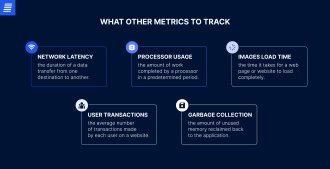

Performance testing provides organizations with crucial insights into how their product operates under load, thereby enabling a better user experience. Performance testing can also save companies time and resources, as software crashes can often be resolved in advance, preventing high bounce rates and downtime losses.
QA expert
Performance testing encompasses several types of tests designed to improve the operation of an application under specific conditions. By simulating diverse environments and measuring different metrics, these tests help identify and eliminate various problems. Let’s look at the most widely used types of performance testing.
Load performance testing typically simulates real user traffic and examines the behavior of the application under varying loads. It helps allocate the appropriate capacity for anticipated loads by pinpointing hardware and system performance bottlenecks. The testing provides data on the typical response time for each transaction and determines the maximum number of users the system can handle.
During stress testing, a software program’s resilience and error-handling capabilities are assessed under very high load. The test involves continuously increasing the number of virtual users and transactions to see how well the software withstands these severe conditions. This also helps identify the point at which the system and its components fail and determine the time required for the system to recover.
As with stress testing, endurance testing assesses whether an application or website can handle a workload far higher than typical operating circumstances. However, it subjects the system to a constant load for a longer period. This helps identify degradations in response times and throughput, potential memory leaks, and issues with resource usage.
This kind of testing subjects the system to sudden, significant increases or decreases in the number of users or transactions to determine whether the system can manage sudden changes in load. It also evaluates how long it will take the system to recover between two or more load spikes in the event of a system breakdown.
This type of testing measures the system’s processing efficiency by subjecting the database to a sudden and intense inflow of data. Volume testing is crucial for software systems that must regularly manage a significant amount of data, transactions, or concurrent users, such as healthcare information systems or online stores during busy shopping seasons. Volume testing helps determine a database’s data processing threshold and the extreme point at which systems will fail. It also helps identify problems with interaction between the servers in your database.
In this case, QA engineers specify whether the program can manage growing loads steadily. This is accomplished by gradually increasing the load’s volume while tracking the system’s response. Scalability testing can be carried out according to database, software, or hardware specifications. It allows testers to verify that the system can handle the anticipated rise in user traffic, data volume, and transaction processing. Scalability testing also measures the point at which an application stops scaling and helps pinpoint potential causes.
Performance testing can be supported with reliable tools. Their functionality and pricing vary, so the choice should depend on the testing type and project resources and requirements. Below are some of the best performance testing solutions on the market.
Apache JMeter is a Java-based, comprehensive, open-source performance testing tool. It is capable of testing a wide range of applications and protocols, such as HTTPS, HTTP, databases, and FTP servers. The tool is adaptable and compatible with a variety of solutions, including data visualization and analysis plug-ins, scriptable samples, and more. It allows testers to customize scenarios, automate testing procedures, and produce more comprehensive reports and insights into system performance. Apache JMeter also allows for integration with many open-source libraries, such as Maven and Jenkins, granting access to additional features, protocols, and algorithms for generating, tracking, and analyzing loads.
WebLOAD performance testing software is used for load, stress, and scalability testing of web and mobile apps. The solution offers the choice of SaaS or on-premises deployment and provides an integrated development environment for storing, editing, and debugging load test scripts. It enables the creation of scripts for various needs, such as WebSocket APIs, asynchronous communication, online services, and others. Additionally, WebLOAD has built-in interfaces for Jenkins, Selenium, and many other tools to enable continuous load testing.
This performance testing cloud application evaluates the scalability and performance of applications. LoadNinja offers templates and pre-built components that allow QA specialists to easily design tests, greatly reducing testing time. LoadNinja also uses browsers rather than load emulators, which eliminates the hassles associated with maintenance and configuration.
NeoLoad integrates with a wide range of tools, particularly those used for CI/CD, test management, and application performance monitoring. This facilitates continuous performance testing, early detection, and root cause analysis of performance issues, along with centralized test asset management. The tool’s sophisticated reporting features and connectivity with numerous protocols make it easy to analyze results and performance statistics. NeoLoad also offers shared test design and outcome analysis, which promotes teamwork.
Locust is an open-source solution for testing highly concurrent workloads, offering real-time monitoring on a web-based dashboard for immediate performance insights. Due to its extensible architecture, it can be customized to satisfy specific testing needs.
The performance testing life cycle may vary depending on the type of testing you select, the system you’re working with, and the issues you face during the process. However, some core steps remain unchanged.
During this stage, QA specialists replicate the testing environment to resemble the real one as closely as possible, which is crucial for efficient performance testing. For this reason, it’s essential to keep records of the configurations and specifications for the hardware, software, infrastructure, and real-world user interaction patterns to ensure the consistency and reproducibility of the tests. Subsequently, relevant tools should be chosen based on your needs.
At this point, experts select relevant key performance indicators (KPIs) such as response time, throughput, resource utilization, error rate, scalability, and more. Establishing baseline performance under a typical load is also essential for later testing as it serves as a point of comparison. Another key task is setting minimum allowable limits and ideal performance objectives for every metric.
This stage is about outlining the testing scenarios for various use cases, such as peak load, normal usage, and stress conditions. QA engineers should also ascertain the quantity of data and transactions for each situation. For some scenarios, the number of concurrent users is determined. Scripts are then written for various types of users and scenarios.
When the plan is ready, the team can proceed to configuring the environment and performing the testing. The prepared scripts are run by the QA team in the created environment. The team analyzes response times, throughput, and resource usage, gradually increasing the test loads while assessing system performance metrics under varied conditions. It also monitors the environment for abnormalities or performance bottlenecks, noting any shifts from expected behavior as the test proceeds.
When QA engineers examine test results, they usually focus on the changes made to the test environment and the cause of the failure. Additionally, they compare current test results with previous results. Once the necessary modifications have been made to the code, tests are run again to ensure any remaining errors have been eliminated.
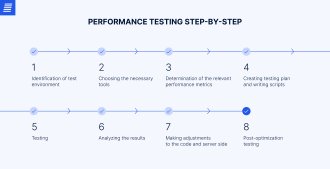

Now that we’ve outlined the theory of performance testing implementation, let’s examine a real-world example of the EffectiveSoft team conducting load testing for one of our projects.
The client is our long-term partner, for which we initially created the Your Fitness Coach (YFC) mobile application—a sports platform that helps users find nearby gyms, track their daily physical activity, engage with other sports enthusiasts, and more.
In 2023, the Your Fitness Coach application forged a partnership with the Dubai Fitness Challenge, a monthlong event aimed at motivating UAE citizens to lead a healthier lifestyle and be more active. Participants were supposed to engage in sports or exercise for 30 minutes 30 days in a row through various digital and real-life competitions.
The YFC application provided challenge participants with daily activity tracking and competition management. We were tasked with preparing the system for the large influx of users and the simultaneous usage of the application by about 1 million accounts.
We initiated mobile performance testing by assessing the functionality of the app sections and gauging the volume of their visitors, outlining the anticipated load. Then, our team drew up a load distribution plan by application sections and high-loaded endpoints.

EffectiveSoft extended the functionality and improved the sustainability of a sports app with high workloads to partner with the Dubai Fitness Challenge 2023.
We expected the highest load in the following sections:
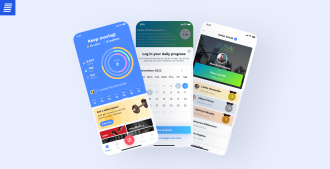

YFC application: Dubai Fitness Challenge
The total standard load was estimated at 1,000–2,000 requests per second, with a peak of 5,000 requests per second.
The scripts for load testing were written using the Apache JMeter application and run to create a standard and peak load on individual endpoints. We monitored the system under load using Datadog, enabling us to log and analyze almost all metrics related to the server component of the system.
The team created a script imitating the registration of 1 million accounts to test the system’s ability to deal with an influx of new users during the challenge month. To simulate a real load, test scenarios of real user behavior with up-to-date timings were created and run simultaneously.
The stability of the system’s stationary operation was checked under various loads, from 1,000 to 4,000 requests per second. The peak load was established as 6,900 requests per second.
To ensure sufficient speed and stability under high loads, we implemented fixes including developing caches for various requests, denormalizing some databases, creating new tables for storing aggregation results, performing horizontal scaling, and others. Each fix was accompanied by a testing round. As a result, we successfully prepared the YFC application for a large flow of Dubai Fitness Challenge participants. The app performed flawlessly during the challenge month and continues to operate without failures.
In today’s highly competitive digital product marketplace, businesses must strive for no less than perfection. In addition to flawless design, interface, and functionality, users expect quick loading times and trouble-free operation. Ensuring the seamless functionality of an application or website is inextricably linked with performance testing.
EffectiveSoft’s QA engineers are experienced in all types of performance testing. If you need to test and improve the operation of your product, contact us for more information about our software testing services.
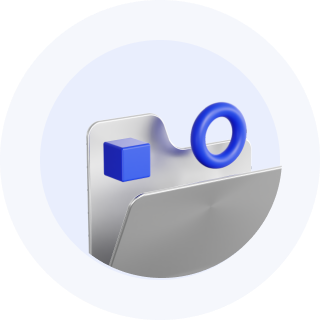
Performance testing is a type of software testing that focuses on a system’s performance under specific loads. It measures a software application’s performance, response time, reliability, scalability, stability, and resource utilization. Depending on the main focus and the terms of testing, performance testing can be divided into the following types: load testing, stress testing, endurance testing, spike testing, volume testing, and scalability testing.
Performance testing typically starts with test environment identification, followed by the selection of the appropriate testing tool based on the type of performance testing, business requirements, available resources, and other factors. Next, QA experts determine the KPIs relevant to the test. Following this stage, essential testing scenarios are outlined for various use cases, such as peak load, normal usage, and stress conditions. QA engineers also determine the volume of data, transactions, and concurrent users for every scenario. Finally, scripts are written for various users and scenarios.
The QA team runs the prepared test scripts in the created environment, analyzing response times, throughput, and resource usage. The team gradually increases the test loads while monitoring the system performance testing metrics under varied conditions.
The team then analyzes the test results; makes necessary changes to the scripts, program code, and server side; and runs the tests again until the desired output is achieved.
In both cases, the system is put under high load. However, stress testing implies creating extreme loads, far higher than normal loads. During endurance testing, QA engineers assess the system’s stability over prolonged periods of high load without creating conditions as severe as stress testing.
Depending on the performance testing type and the test objectives, the QA team chooses relevant software system quality metrics to track. Options include average load time, response times, hits per second, throughput, wait time, bandwidth, memory usage, disk time, concurrent users, error rate, and maximum active sessions.
Can’t find the answer you are looking for?
Contact us and we will get in touch with you shortly.
Our team would love to hear from you.
Fill out the form, and we’ve got you covered.
What happens next?
San Diego, California
4445 Eastgate Mall, Suite 200
92121, 1-800-288-9659
San Francisco, California
50 California St #1500
94111, 1-800-288-9659
Pittsburgh, Pennsylvania
One Oxford Centre, 500 Grant St Suite 2900
15219, 1-800-288-9659
Durham, North Carolina
RTP Meridian, 2530 Meridian Pkwy Suite 300
27713, 1-800-288-9659
San Jose, Costa Rica
C. 118B, Trejos Montealegre
10203, 1-800-288-9659